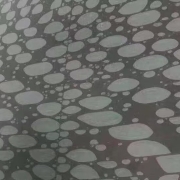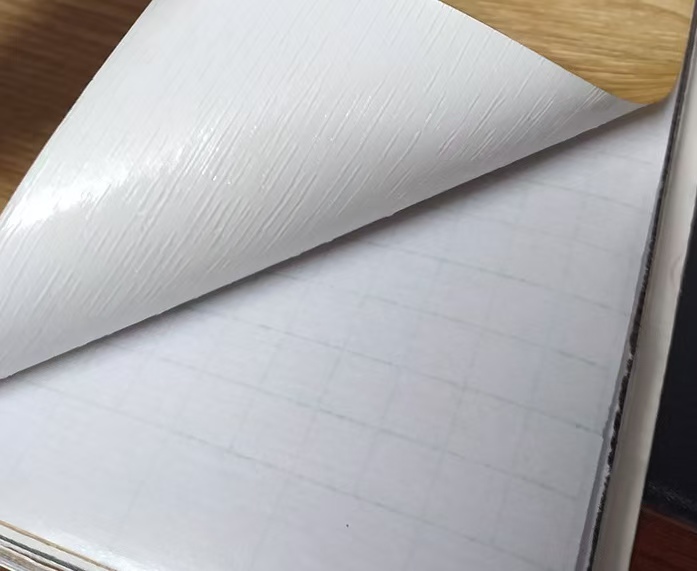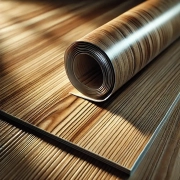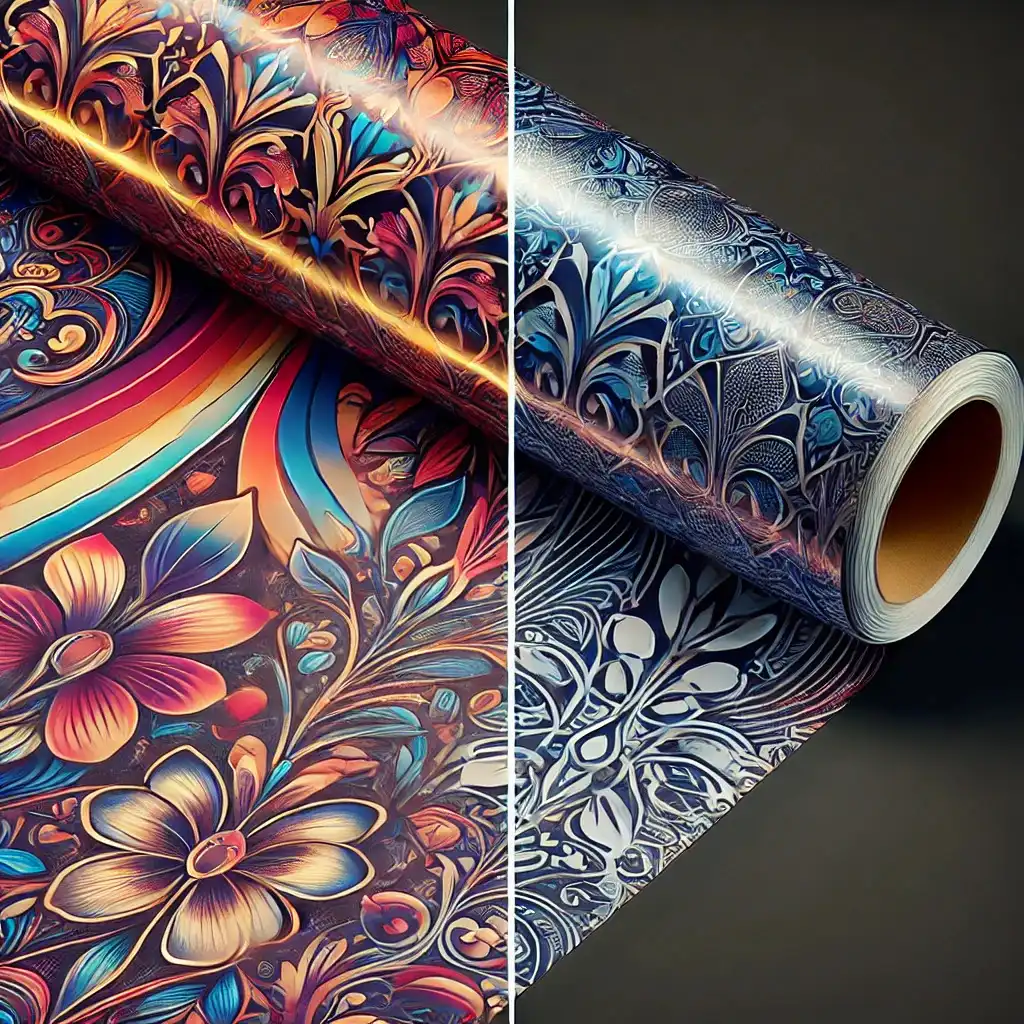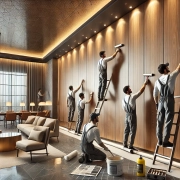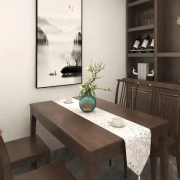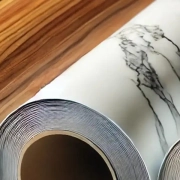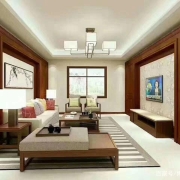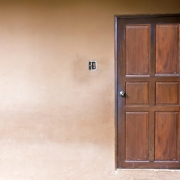What are the main benefits of using PVC decorative film in interior design?
PVC decorative film has become a popular choice for both interior furniture and commercial decoration due to its versatility, cost-effectiveness, and aesthetic appeal. This material offers an extensive range of designs, from realistic wood grains and elegant marble effects to sleek metallic finishes and vibrant solid colors, allowing designers to achieve varied aesthetic goals without the high costs and challenges associated with natural materials.
The use of PVC decorative film extends across various applications, making it a preferred option in numerous settings. In residential spaces, it is frequently used on furniture, walls, kitchen cabinets, and flooring to provide a quick, affordable facelift.
Commercially, it finds extensive use in offices, hotels, and retail environments, where durability and ease of maintenance are as crucial as appearance. Its ability to withstand wear and tear and resist moisture makes it particularly suitable for high-traffic areas.
1. PVC Decorative has versatility in Design
The versatility in design offered by PVC decorative film is a significant advantage in the field of interior design. The material is available in an extensive range of designs, colors, and textures. These include realistic wood grains, elegant marble effects, sleek metallic finishes, and vibrant solid colors. This diversity allows interior designers to fulfill a wide array of aesthetic preferences and design requirements without facing the high costs and installation complexities associated with natural materials like real wood or stone.
This adaptability not only enhances the creative potential within a space but also provides practical solutions for various design challenges.
For example, designers can use PVC film to replicate the look of expensive materials in budget-constrained projects or to achieve a consistent theme across different surfaces and elements within a space. Additionally, the ability to mimic other materials means that PVC film can be seamlessly integrated into both traditional and contemporary design schemes, making it a versatile choice for a broad range of interior decorating projects.
2. PVC foil is cheaper than real wood grain
The cost-effectiveness of PVC decorative film makes it an attractive option for both residential and commercial projects. Compared to natural materials such as wood or stone, PVC film is significantly more affordable, allowing budget-conscious consumers to achieve luxurious, high-end looks without the accompanying high costs. This affordability is especially beneficial for large-scale projects where the cost of materials can escalate quickly.
By opting for PVC decorative film, developers and designers can cover extensive areas or numerous items of furniture with stylish finishes that mimic more expensive materials, all while staying within budget constraints. This economical solution doesn’t just reduce initial costs; it also lowers long-term expenditures since PVC film is durable and requires minimal maintenance.
3. PVC film has a long service life, with excellent resistance features
The durability of PVC films is a key attribute that significantly enhances their appeal for use in various settings. These films are engineered to resist moisture, scratches, and stains, qualities that make them exceptionally suitable for areas that experience heavy use or are prone to wear and tear.
This resilience makes PVC decorative film an ideal choice for kitchens and bathrooms where humidity and water exposure are common. Additionally, its scratch and stain resistance are beneficial in high-traffic areas such as hallways, commercial spaces, and public venues where the flooring and surfaces need to maintain their appearance under frequent use.
This robustness ensures that the aesthetic appeal of the film is not easily compromised, contributing to longer-lasting finishes and reducing the need for frequent replacements or repairs. As a result, PVC films offer not only a cost-effective solution but also a practical and durable option for enhancing interiors across various environments.
4. PVC decorative film is easy to clean and maintain
PVC decorative film is easy to clean and maintain. They typically do not require the use of special cleaning agents or intensive treatments to stay in good condition. This ease of upkeep is particularly advantageous as it helps to keep maintenance costs low over the lifespan of the film.
The simplicity involved in caring for PVC film makes it a desirable choice for both residential and commercial environments. In homes, it allows for quick clean-up in areas like kitchens and playrooms. In commercial spaces such as offices, restaurants, and hospitals, where cleanliness is paramount, the low-maintenance nature of PVC film ensures that spaces can be kept hygienic and presentable with minimal effort and expense. This practical aspect of PVC film not only saves time and money but also enhances the long-term durability and appearance of the surfaces it covers.
5. Ease of Installation
The ease of installation associated with PVC decorative film is another compelling advantage that makes it highly favored in both residential and commercial projects. This type of film can be effortlessly applied to a diverse range of surfaces, including walls, furniture, doors, and cabinets. Its adaptability allows for quick transformations of spaces without the need for extensive preparations or specialized tools.
The self adhesive PVC decorative film is easy to use for renovating the interior and house.
If you use the PVC decor film for your MDF, plywood, etc surface board product, the cold roller machine & vacuum press machine are all workable.
6. PVC films are also recyclable, eco-friendliness
The eco-friendliness of some types of PVC films is a significant benefit, particularly in today’s environmentally conscious market. These films are often made from recycled materials, which helps in reducing waste and conserving resources. Furthermore, many PVC films are also recyclable, meaning they can be processed and reused at the end of their lifecycle instead of ending up in landfills.
Choosing eco-friendly PVC films for interior design projects can significantly reduce the environmental impact associated with decorating and renovation. This sustainability aspect appeals to consumers and businesses looking to uphold green practices. By integrating these eco-friendly options, designers and property owners can contribute to a more sustainable future, all while meeting their aesthetic and functional needs without compromising on style or durability.
7. PVC films are tailored to specific design
PVC film manufacturers are able to produce PVC films that are tailored to specific design requirements, including custom colors, patterns, and even textures. This level of customization enables designers and homeowners to achieve a unique and personalized aesthetic that stands out.
8. PVC foil is light and easy to handle
The lightweight nature of PVC film is a significant advantage, especially in interior design and architectural applications. Being light and easy to handle, PVC film reduces the structural load on furniture and buildings, making it an ideal choice for both small and large-scale projects. This attribute is particularly beneficial in settings where minimizing additional weight is crucial, such as in older buildings or in large installations like wall coverings and expansive decorative surfaces.
These benefits collectively make PVC decorative film a practical and stylish choice for enhancing interiors. Its functionality, combined with its aesthetic appeal, offers a comprehensive solution for various design needs. Whether for residential settings, commercial spaces, or specialized applications, PVC film provides an effective way to improve both the appearance and utility of interior environments.
The versatility in design, ease of maintenance, durability, and cost-effectiveness of PVC film allows it to meet a wide range of aesthetic and practical requirements. Additionally, its eco-friendly options and customizable features further enhance its attractiveness to consumers seeking sustainable and personalized design solutions. Consequently, PVC decorative film stands out as an ideal material for those looking to blend style with substance in their decorating projects.

